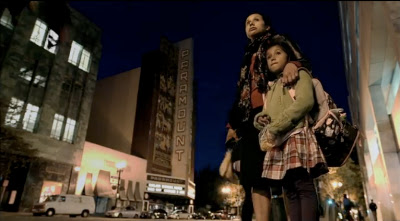WHAT: Blaché scholar Alison McMahan wrote in 2002 about the director's 100-year-old "temporary transvestite film" (her words), made during her American period:
Officer Henderson denaturalizes sexual difference and therefore threatens to disrupt an apparently natural order. For most of the film we experience the unsettling pleasures of the cross-dressing narrative, and then the traditional narrative closure provides us with the satisfactions of completion as well as reassuring us that all is indeed well, that men are still men and women are still women. The "justified crossdressing" or "closure" approach is basically the approach used in Hollywood films today, films such as Tootsie and Victor/Victoria and the classic Some Like It Hot.WHERE/WHEN: Screens on a program starting tonight at 7:30 at the Niles Essanay Silent Film Museum in Fremont.
WHY: I haven't posted an update of upcoming silent film screenings on this blog since last month, if only because I haven't heard tell of any new ones since then. But with only a month left to go in 2013, time is running out on chances to see 1913 releases celebrating their centenary. Tonight's showing of Officer Henderson and the Rafael Film Center's The Films of 1913 showcase December 12th. Next month the Silent Film Festival launches the 2014 silent film season with a centenary tribute to The Little Tramp and to Charlie Chaplin's film career, but even there, no actual films from 1914 are expected to screen that day. The fairly rich tradition of silent filmgoing on Frisco Bay frequently leaves out the filmmaking of the pre-World War I era, I assume partly because its prints are scarcer, partly because its stars and directors are less well-known, and partly because the production style is quite a bit more alien to modern audiences than that of films made ten or even five years later. The entire December slate of films screening in Niles each Saturday comes from the 1916-1929 period, expressing a range from Douglas Fairbanks adventure/comedy (1916's Flirting With Fate December 7) to animation from Otto Messmer (Felix Flirts With Fate Dec. 7) and the Fleischer Brothers (Bubbles Dec. 14) to the epic scale of Cecil B. DeMille (his 1923 original The Ten Commandments December 21) to the somehow both refined and chaotic slapstick of Laurel and Hardy (Big Business December 29).
HOW: Part of a bill with the Norman Taurog/Larry Semon comedy short and the Charles Emmett Mack feature The Unknown Soldier, I believe all screened from 16mm prints with live piano accompaniment by Frederick Hodges.































